New book celebrates 100 years of New York City landmarks where LGBTQ+ history took place
Marc Zinaman’s ‘Queer Happened Here: 100 Years of NYC’s Landmark LGBTQ+ Places’ is a vital tribute to queer culture
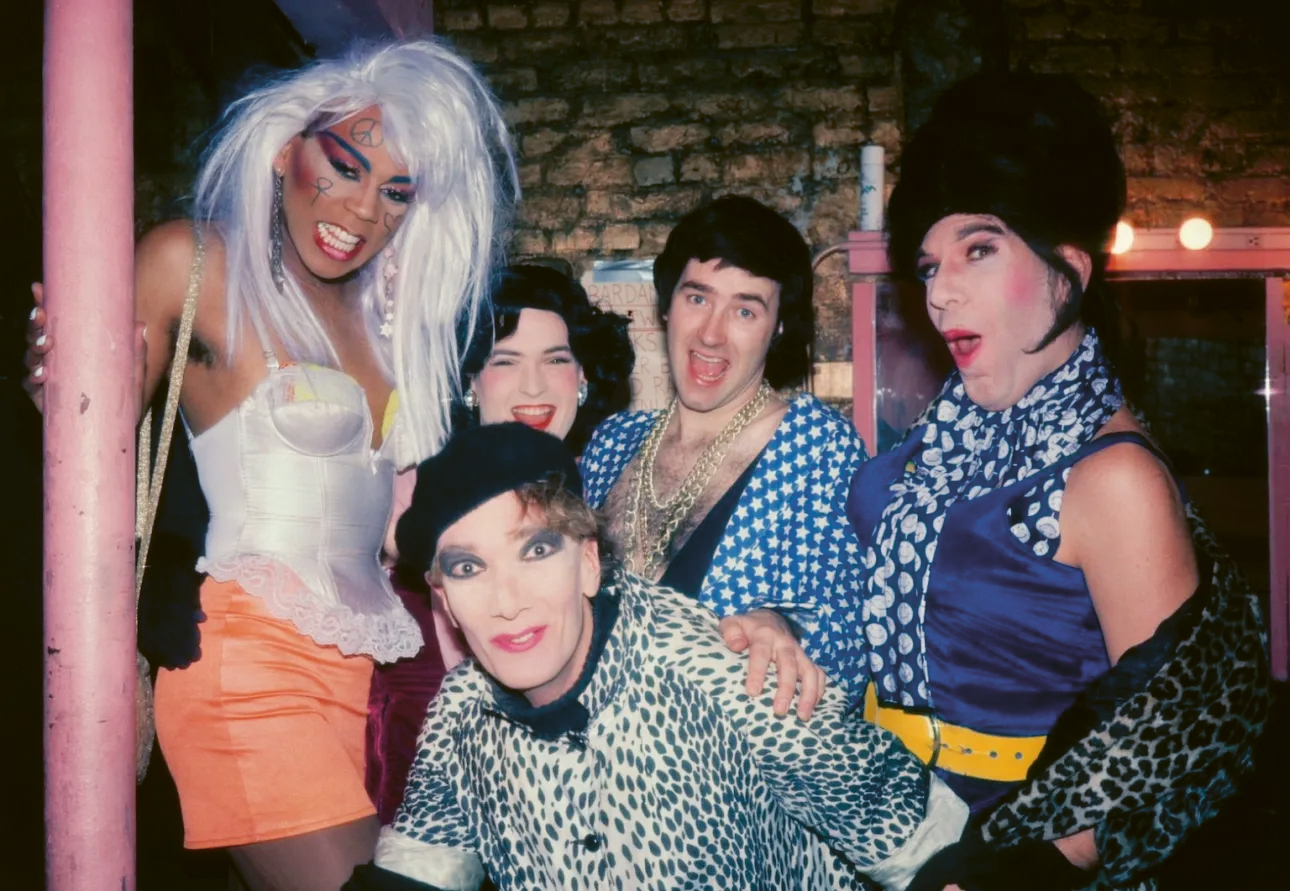
In a thoughtfully researched and visually captivating new book, author Marc Zinaman offers an intimate journey through the places where a century of LGBTQ+ history in New York City took place. A New York native, Zinaman sheds light on everything from the city’s early bathhouses and balls of the 1920s to the joyful debauchery of Club Cumming, still thriving today. Published at a time when American politicians are actively erasing these stories, Zinaman’s Queer Happened Here: 100 Years of NYC’s Landmark LGBTQ+ Places (Prestel, $50) is a crucial celebration of the past, present and future of queer culture.
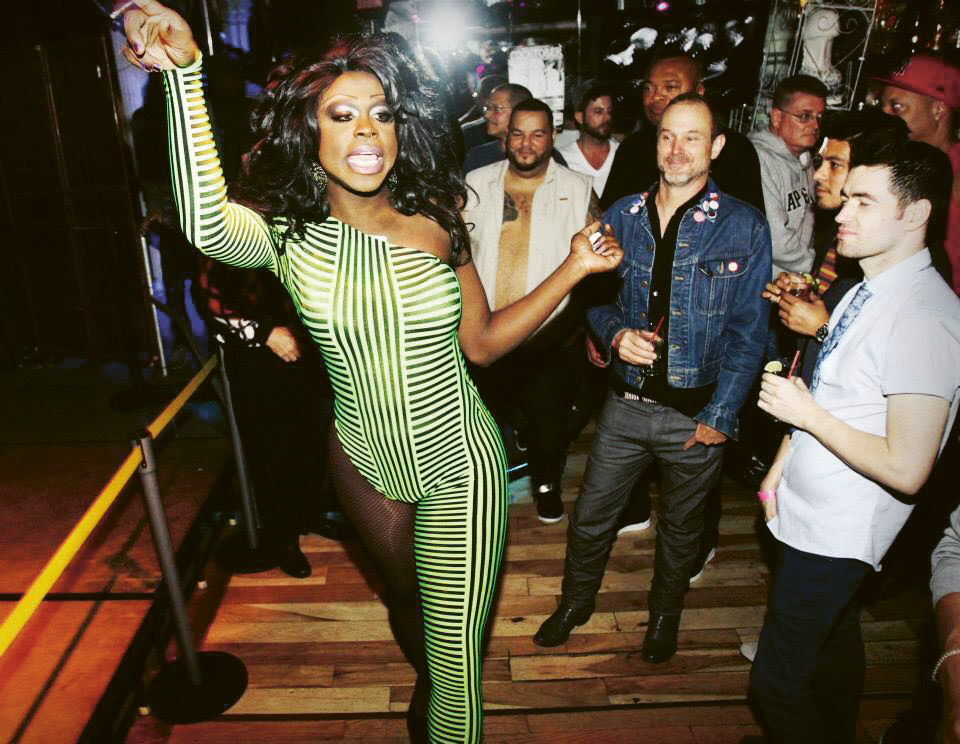
Bob the Drag Queen performing at Barracuda, 2014
Zinaman began the project just before the pandemic after watching documentaries about legendary club Studio 54 that sparked his curiosity into lesser-known queer spaces. He started mapping locations across the city and compiling research, eventually finding nearly 1,000 places significant to LGBTQ+ culture. Many of these are featured on Zinaman’s Instagram account that shares its name with the book, Queer_Happened_Here, and also includes photographs of queer people and their stories.
‘As the account grew in popularity, it became clear that there was a deep collective longing for this kind of archival storytelling,’ Zinaman tells Wallpaper*. Queer Happened Here features 69 places and is divided by decade, each section accompanied by text explaining developments in culture and setting the political and social background of the time. Some locations are synonymous with queer culture, like The Stonewall Inn and the Christopher Street Piers, but where the book truly shines is in featuring places whose legacies are less known, or whose existence was short lived, yet far from insignificant. Many of the buildings – former bathhouses, clandestine clubs, and bars once home to a mesh of queer joy and sensuality – now bear no evidence of their past.
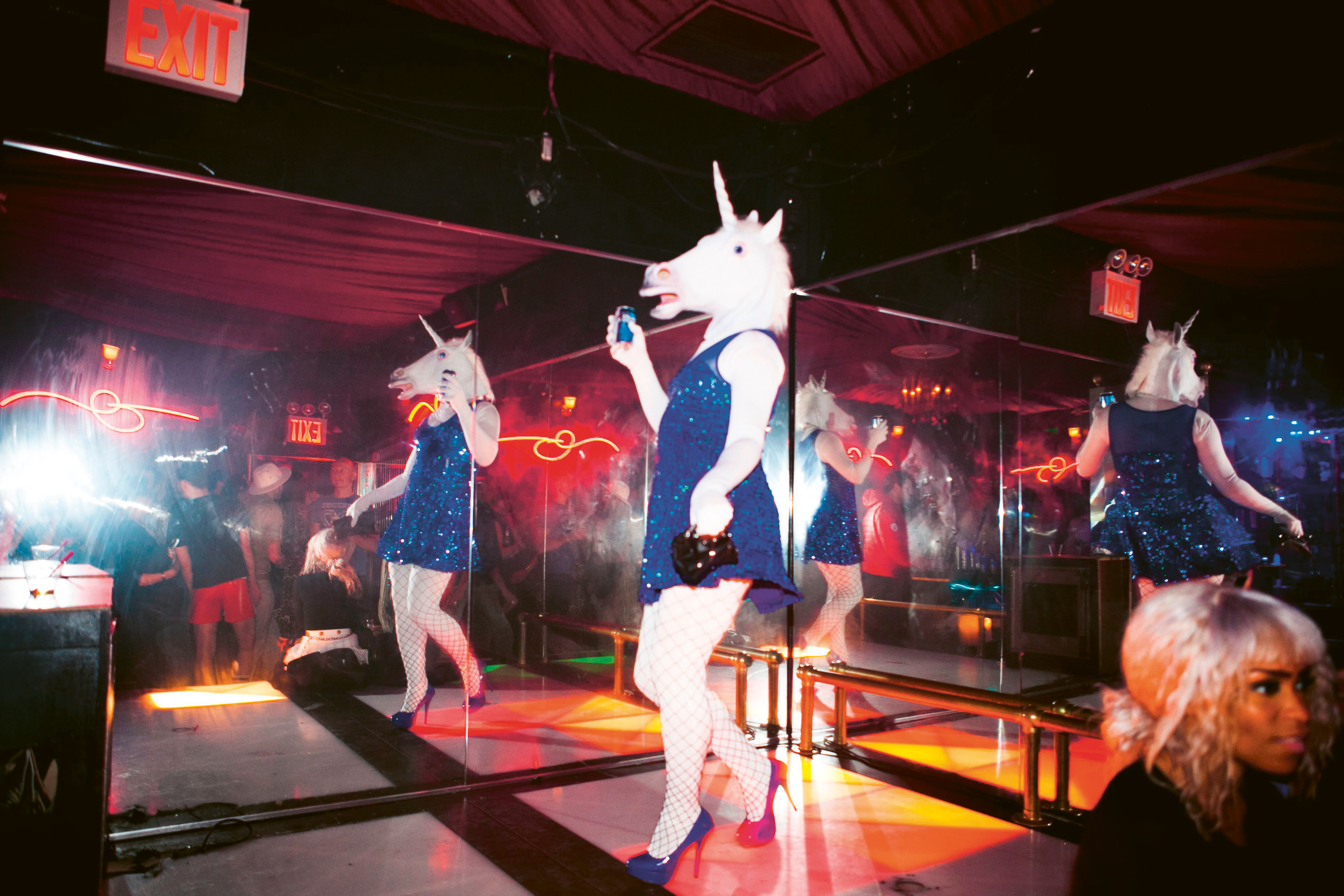
Unicorn dancer, 2013
Queer Happened Here features a range of historic images and ephemera, like a 1957 poster for a drag show at Club 82 and a 1975 advertisement for The Continental Baths that promises visitors will ‘come once’, and ‘come again’. Joining these are over 400 works by photographers and artists, such as JEB (Joan E Biren), whose photographs, books, and travelling exhibitions document the lives of queer people, in particular lesbians.
As Zinaman takes the reader from bar to club to park bench, he weaves in deeply researched history and interviews with members of the queer community. ‘During my research process, I realised there was no better way to commemorate these nightlife spots than by gathering the wild, heartfelt, and personal memories of those who worked, danced, or simply found community there,’ says Zinaman. ‘So that’s why, throughout the book, you can find quotes from legendary nightlife figures like Susanne Bartsch and Robbie Leslie, but also from everyday people whose experiences were just as integral to these spaces.’
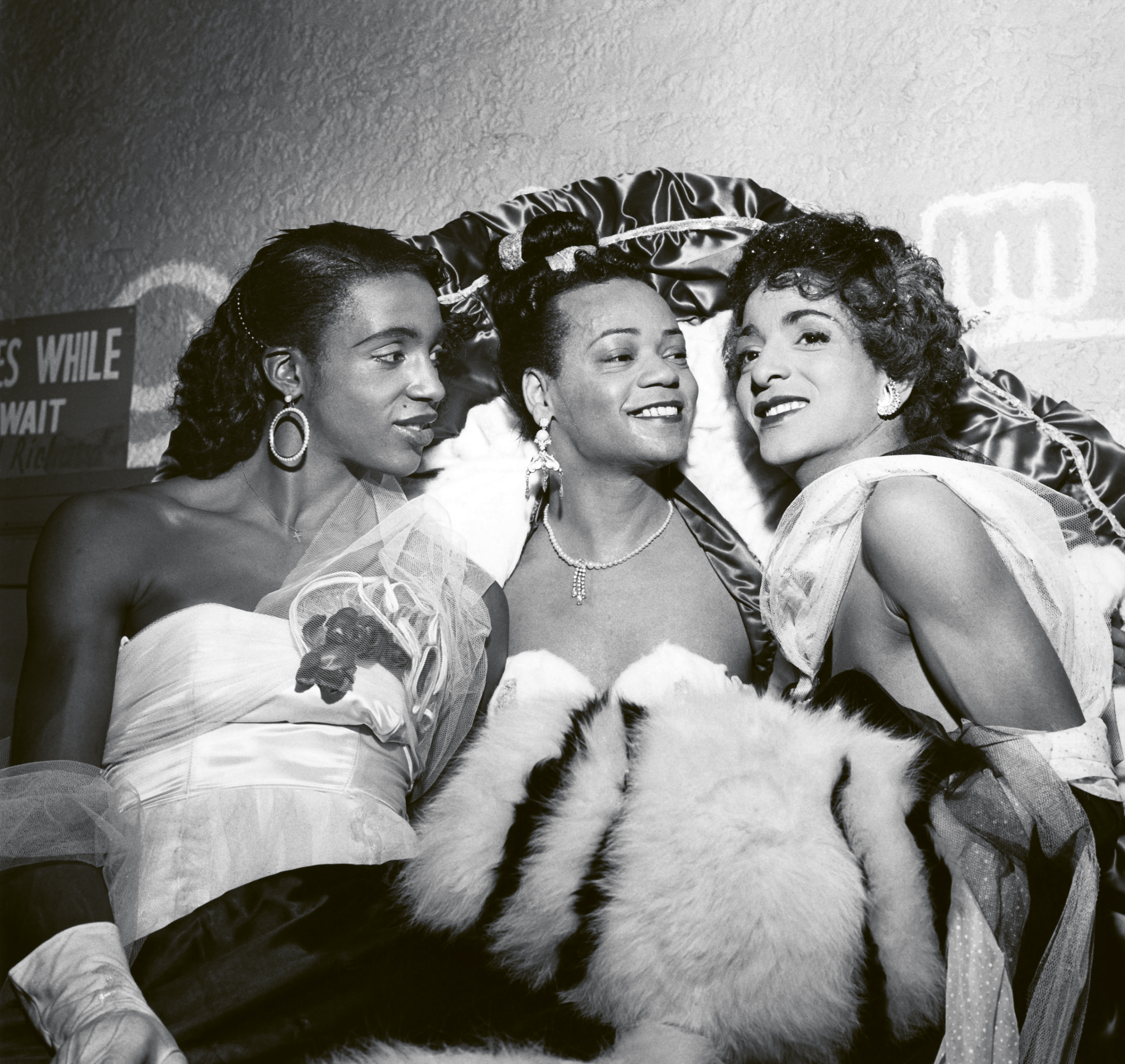
Funmakers’ Ball participants Eddie Mcclennon, Bobbie Laney and Toni Evans, 1954
While the pulsating bass, body heat, and distinct aroma of these titillating places seem to emanate from the featured photos, Queer Happened Here doesn’t shy away from the darker realities of queer existence. Zinaman includes a section on the Women’s House of Detention, a prison in Greenwich Village where women – including many queer women and trans-masculine people – were imprisoned over the course of 40 years. He also traces events of boycotting, homophobia, violence and raids, as well as the tragic toll the AIDs crisis took.
The more painful places and moments, along with those synonymous with queer excellence and celebration, are all part of what makes the LGBTQ+ community what it is today. Next time you walk down Bleecker Street or sit beside the Bethesda Fountain in Central Park, know that you’re surrounded by queer history. This history deserves recognition, along with the love, the activism, the hatred and the resiliency that came with it. Through each place in the book, Zinaman weaves a cohesive narrative that tells a compassionate and detailed story of a century of New York City’s queer community.
Receive our daily digest of inspiration, escapism and design stories from around the world direct to your inbox.

Iconic Mother Paris Dupree performing at Escuelita, 1990
As homophobia, suppression of queer culture, and threats to LGBTQ+ rights increase under the current administration in the United States, projects like Zinaman’s are more crucial than ever. ‘Initially, the gravity of my work stemmed from several experiences I had, where a number of LGBTQ+ elders with whom I had hoped to connect and to interview ended up passing away before I could record their stories,’ says Zinaman. ‘More recently, my relationship to the project has had to evolve with the times. While I haven’t yet faced any direct consequences, the broader political environment has certainly made the work I’m doing feel even more important, not to mention highlighting the importance of backing up all my content in anticipation of potential censorship or erasure.’
Across roughly 300 pages, the places Zinaman features in Queer Happened Here stand in for the people and events that took place, and while some spaces may no longer exist and some stories are actively silenced, their legacies cannot be erased.
Queer Happened Here: 100 Years of NYC’s Landmark LGBTQ+ Places, by Marc Zinaman, foreword by Peppermint, published 2025 by Prestel Verlag, also available from amazon.co.uk

‘Backstage Buddies’, Female Mimics Magazine Volume 1, Number 9, 1967
Annabel Keenan is a Brooklyn-based writer specialising in contemporary art, market reporting, and sustainability. She contributes to several publications, including The New York Times, The Financial Times, The Art Newspaper, Artforum, and Brooklyn Rail. She is also the author of Climate Action in the Art World: Towards a Greener Future, a call for sustainable practices in the art world (May 2025, Lund Humphries and Sotheby’s Institute).
-
 Jaguar spotlights five emerging artists in its inaugural Arts Awards
Jaguar spotlights five emerging artists in its inaugural Arts AwardsThe new Jaguar Arts Awards in partnership with London’s Royal College of Art embody a shared drive to nurture new talent; meet the 2025 winners
-
 ‘Locally anchored and globally conversant’: Salone del Mobile debuts in Saudi Arabia
‘Locally anchored and globally conversant’: Salone del Mobile debuts in Saudi ArabiaSalone del Mobile lands in Riyadh (26-28 November 2025), bringing its creative and manufacturing know-how to one of the world’s fastest-growing markets and setting the stage for Italo-Saudi design relations
-
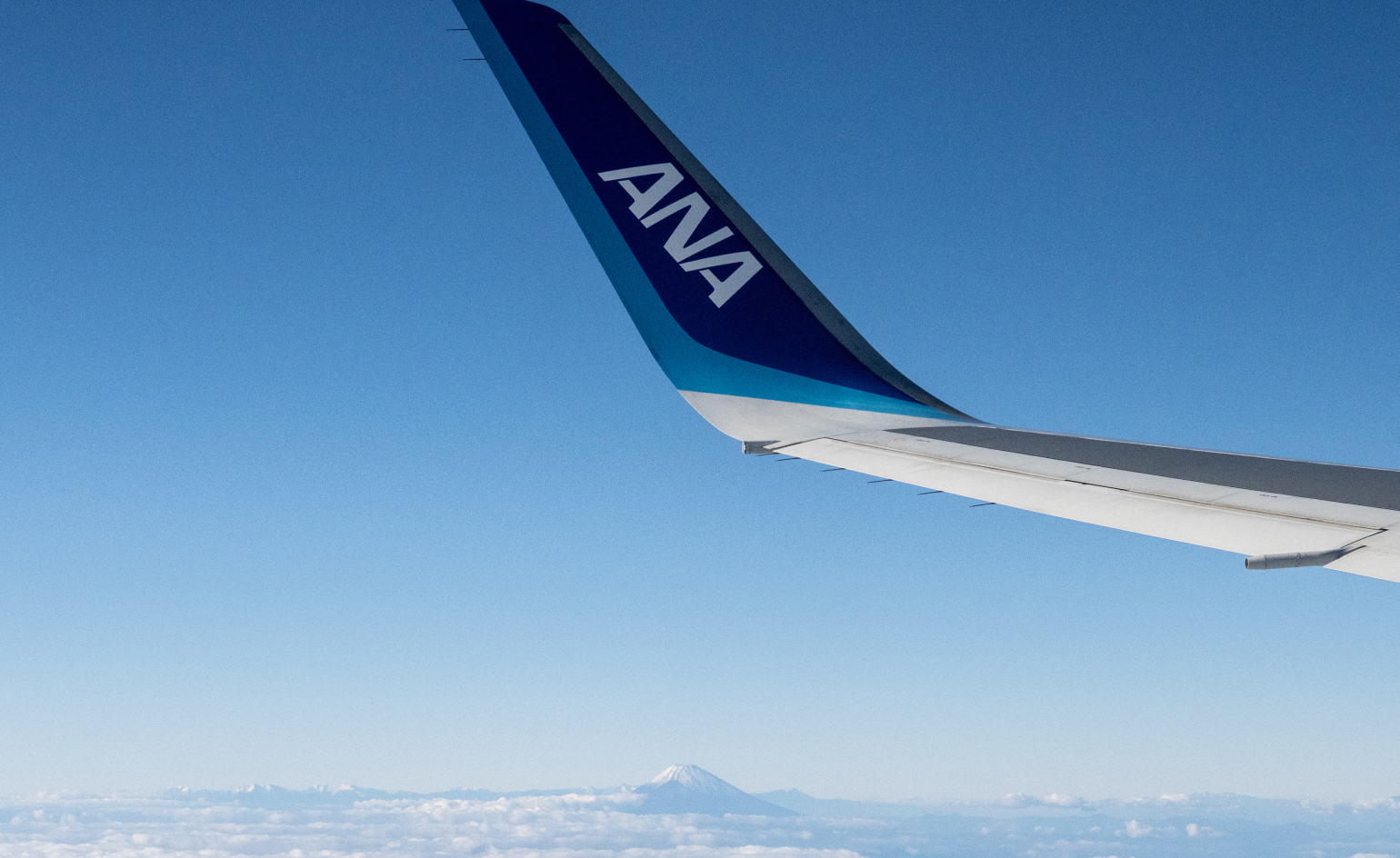 Free flights across Japan? ANA just made it happen
Free flights across Japan? ANA just made it happenA new All Nippon Airways scheme in collaboration with the Japan National Tourism Organization aims to ease overtourism in major hubs by boosting regional travel
-
 Out of office: The Wallpaper* editors’ picks of the week
Out of office: The Wallpaper* editors’ picks of the weekIt’s been a week of escapism: daydreams of Ghana sparked by lively local projects, glimpses of Tokyo on nostalgic film rolls, and a charming foray into the heart of Christmas as the festive season kicks off in earnest
-
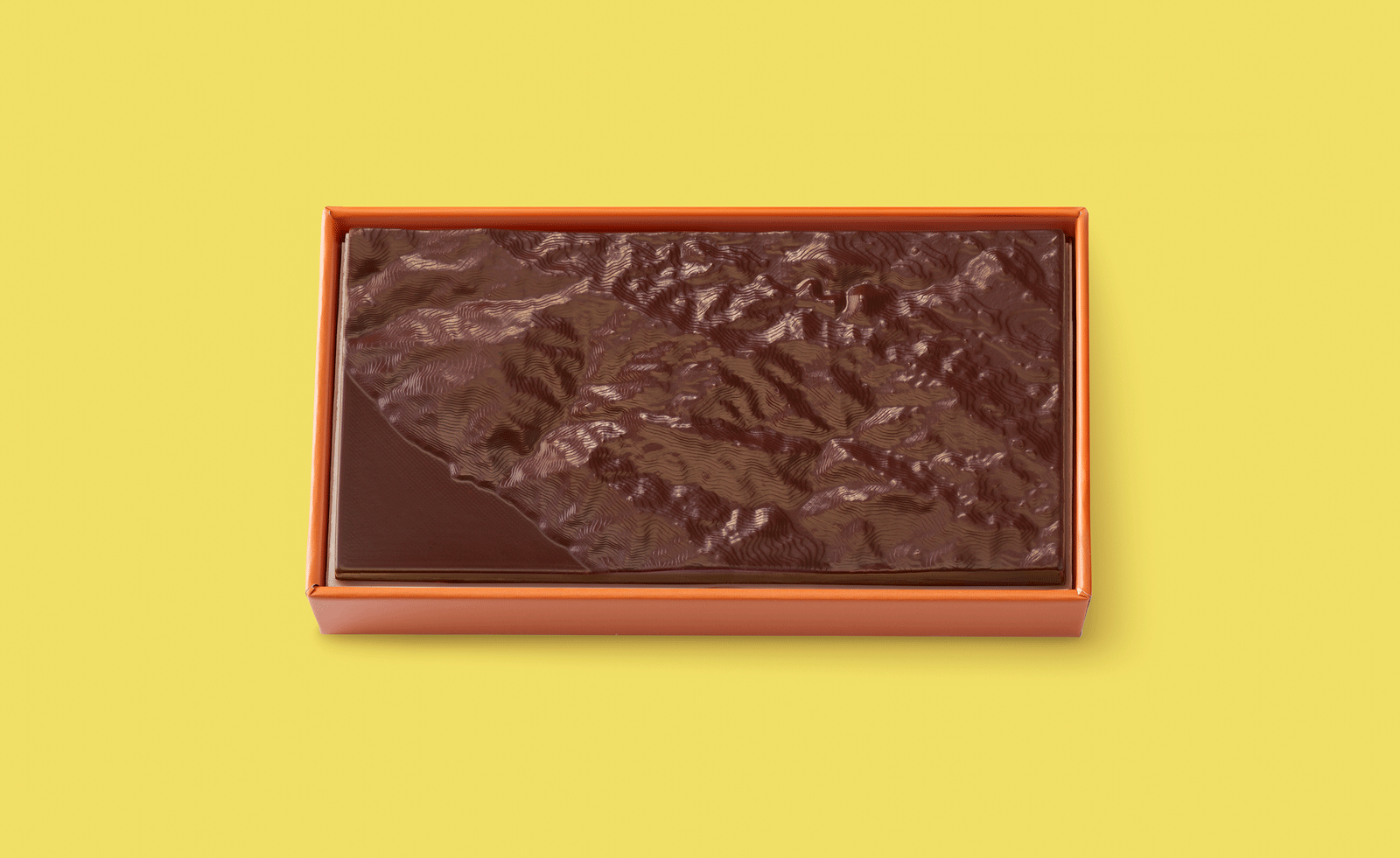 Ed Ruscha’s foray into chocolate is sweet, smart and very American
Ed Ruscha’s foray into chocolate is sweet, smart and very AmericanArt and chocolate combine deliciously in ‘Made in California’, a project from the artist with andSons Chocolatiers
-
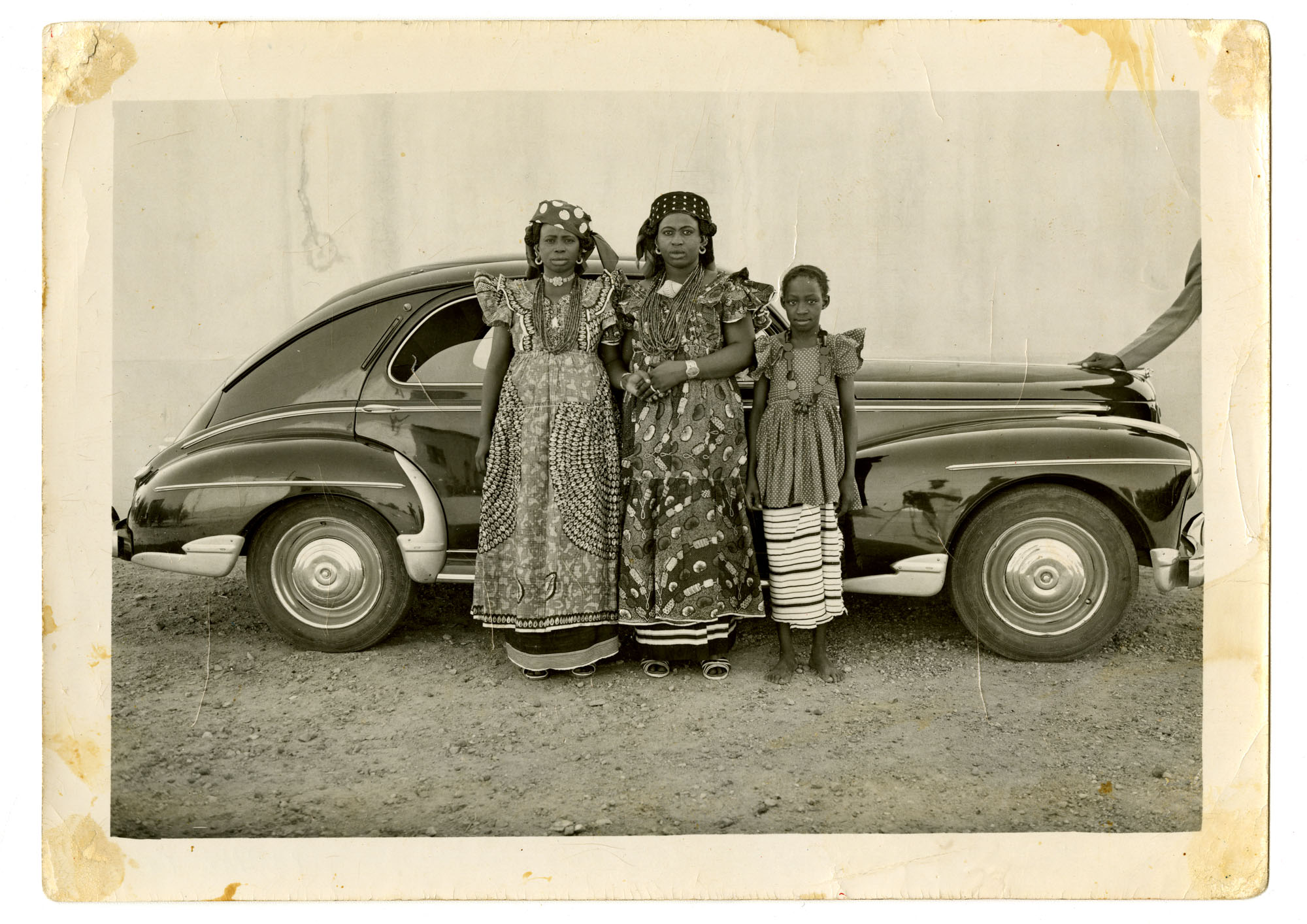 Inside the work of photographer Seydou Keïta, who captured portraits across West Africa
Inside the work of photographer Seydou Keïta, who captured portraits across West Africa‘Seydou Keïta: A Tactile Lens’, an exhibition at the Brooklyn Museum, New York, celebrates the 20th-century photographer
-
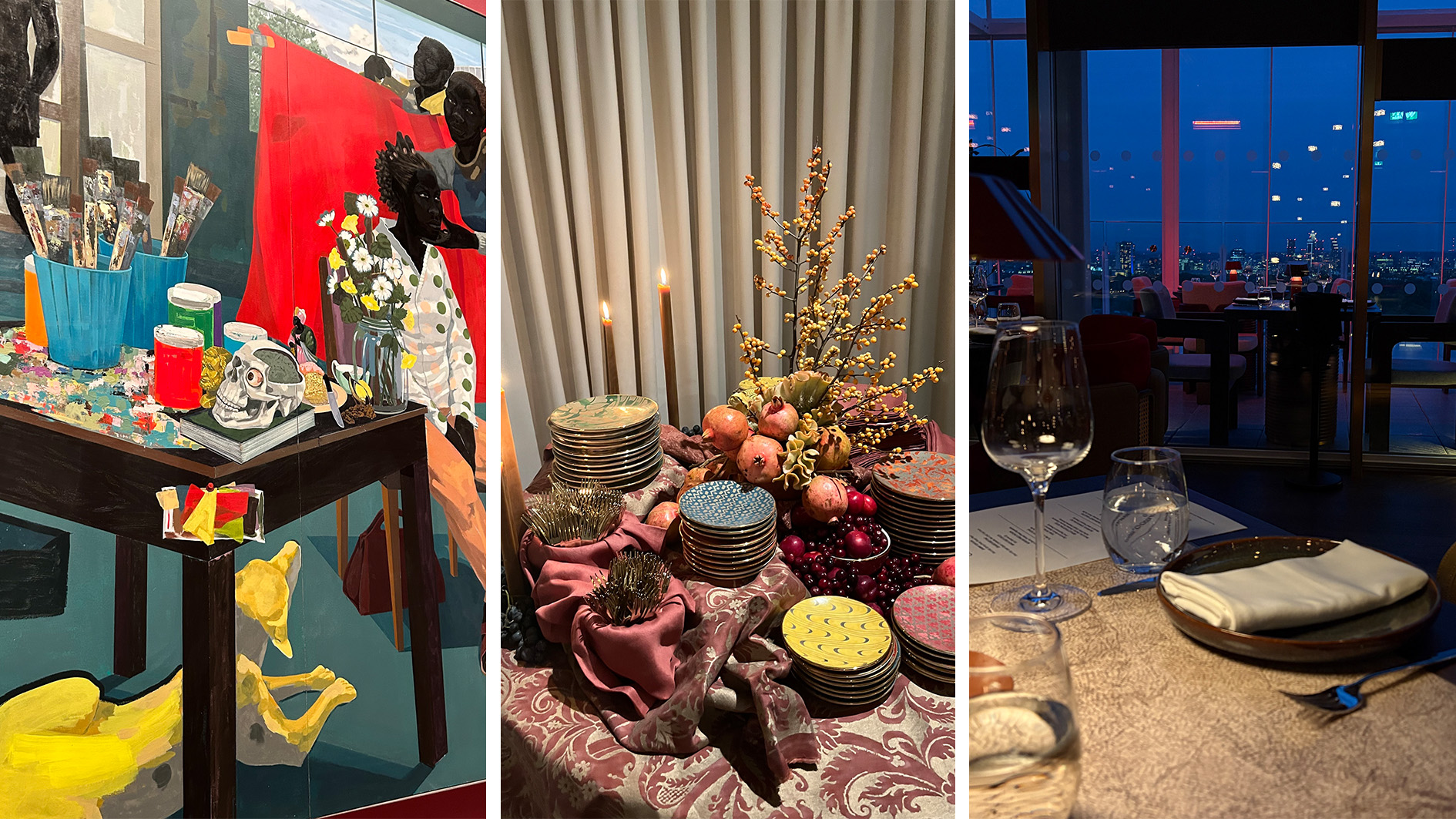 Out of office: The Wallpaper* editors’ picks of the week
Out of office: The Wallpaper* editors’ picks of the weekFrom sumo wrestling to Singaporean fare, medieval manuscripts to magnetic exhibitions, the Wallpaper* team have traversed the length and breadth of culture in the capital this week
-
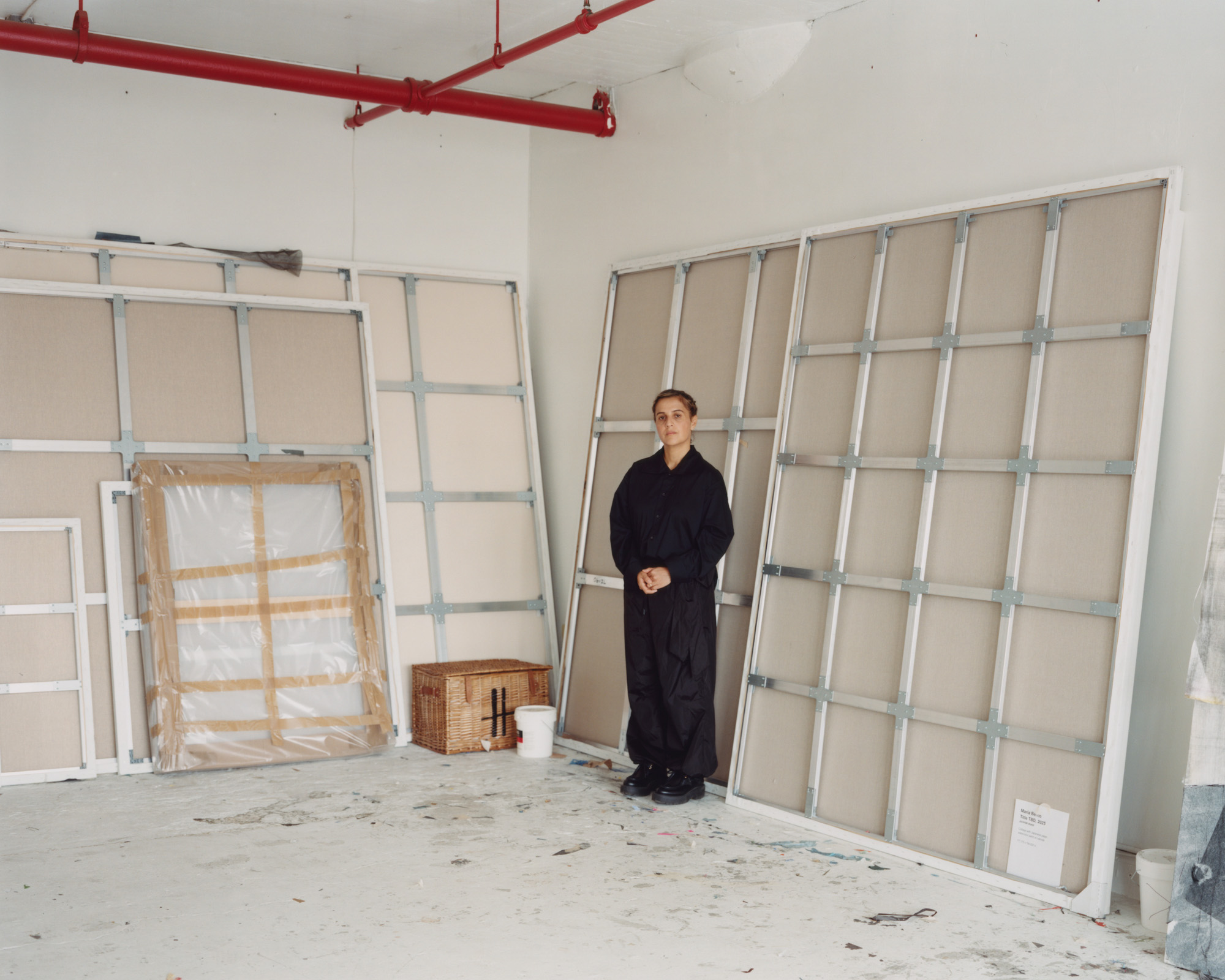 María Berrío creates fantastical worlds from Japanese-paper collages in New York
María Berrío creates fantastical worlds from Japanese-paper collages in New YorkNew York-based Colombian artist María Berrío explores a love of folklore and myth in delicate and colourful works on paper
-
 Out of office: the Wallpaper* editors’ picks of the week
Out of office: the Wallpaper* editors’ picks of the weekAs we approach Frieze, our editors have been trawling the capital's galleries. Elsewhere: a 'Wineglass' marathon, a must-see film, and a visit to a science museum
-
 June Leaf’s New York survey captures a life in motion
June Leaf’s New York survey captures a life in motionJune Leaf made art in many forms for over seven decades, with an unstoppable energy and fierce appetite leading her to rationalise life in her own terms.
-
 Jamel Shabazz’s photographs are a love letter to Prospect Park
Jamel Shabazz’s photographs are a love letter to Prospect ParkIn a new book, ‘Prospect Park: Photographs of a Brooklyn Oasis, 1980 to 2025’, Jamel Shabazz discovers a warmer side of human nature